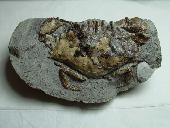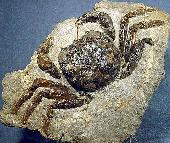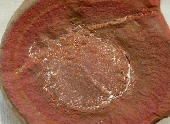|
 See More Images See More Images

Cancer (Romaleon) wahkiakumensis
© 2006 North America Research Group

Avitelmessus grapsoideus
© 1998 Dr. Richard Paselk, Humboldt State University Natural History Museum

Cyclus obesus
© 2005 The Virtual Fossil Museum
|
What are Crustaceans? Crustaceans include a diversity of marine, freshwater, and terrestrial animals. All crustaceans have a head with five pairs of appendages, two of which are antennae. But the number of body segments, appendages on the thorax and abdomen, and presence of a tail vary between groups. Many microscopic crustaceans, like krill and brine shrimp, are members of the marine plankton, an important food source for other animals in the sea. Shrimp, lobsters, crabs, crayfish, and barnacles are crustaceans, as are the pill bugs found on the forest floor or city sidewalk. First known fossil occurrence: Cambrian. Last known fossil occurrence: Quaternary. This group has living relatives. |
Fossils through time:
Choose a time period to see what life was like:
|
|